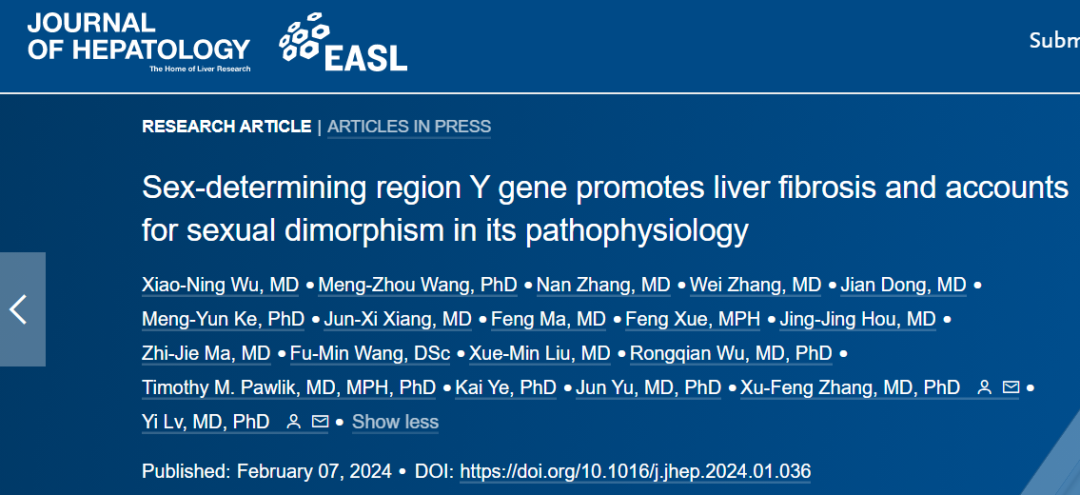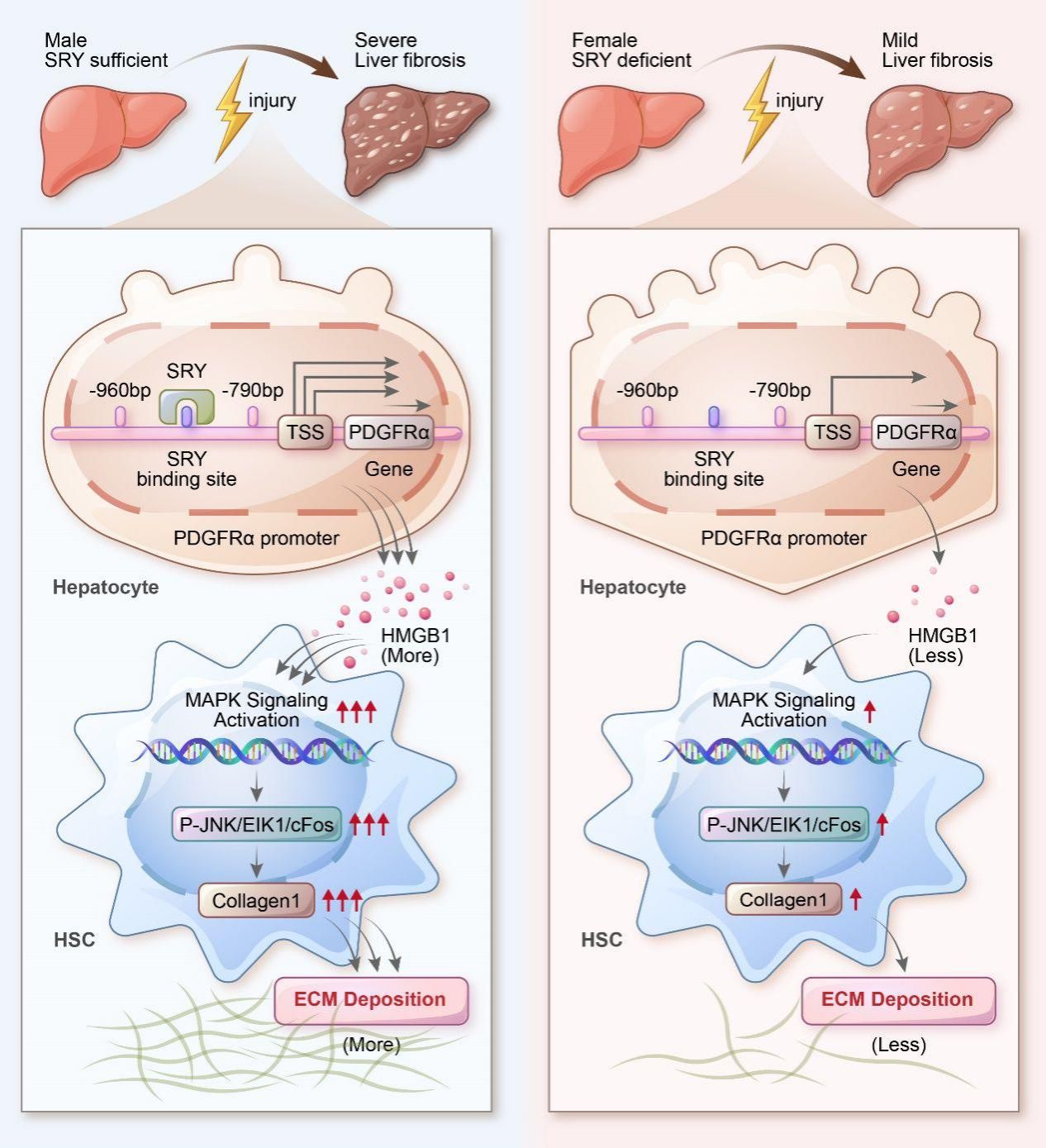Recently, the team of Professor Lyu Yi and Professor Zhang Xufeng from the First Affiliated Hospital (FAH) of Xi'an Jiaotong University (XJTU) published an original research article entitled "Sex-determining region Y gene promotes liver fibrosis and accounts for sexual dimorphism in its pathophysiology" in Journal of Hepatology. This study reveals for the first time that Y chromosome and its coding gene are key genetic factors that lead to higher incidence and faster progression of liver fibrosis in men than in women.

In this study, mouse models were established to reproduce the clinical phenomenon of sex disparity of liver fibrosis. In both surgically castrated and non-surgically castrated mice, male mice developed more severe toxin- or cholestasis-induced liver fibrosis than females. Among all Y chromosome-encoded genes, SRY (sex-determining region Y gene) was the most significantly up-regulated gene in fibrotic livers in male mouse models and patients. In addition, SRY knock-in (KI), knock-out (KO) and SRY KI/PDGFRα KO mouse models were established. Compared with age- and sex-matched control mice, SRY KI mice developed exacerbated liver fibrosis, whereas SRY KO mice had alleviated liver fibrosis after BDL or CCl4 administration. Mechanistically, both in vivo and in vitro studies illustrated that SRY in hepatocytes can transcriptionally regulate PDGFRα expression, and promote high mobility group box 1 (HMGB1) release and subsequent HSCs activation. Knockout of PDGFRα or treatment with the SRY inhibitor DAX1 in SRY KI mice abolished SRY-induced HMGB1 secretion and liver fibrosis. Consequently, SRY is a strong pro-fibrotic factor and accounts for the sex disparity of liver fibrosis, suggesting its critical role as a potentially sex-specific therapeutic target for prevention and treatment of the disease.

Liver fibrosis is caused by excessive accumulation of extracellular matrix proteins in the liver, which mainly include type I and type III collagen. These proteins are mainly produced by activated myofibroblasts, and hepatic stellate cells are the main source of these myofibroblasts. Although hepatic stellate cells play a key role in the incidence of liver fibrosis, other types of liver cells, such as hepatocytes, also play an important role during this process. Hepatocytes occupy a dominant position in the liver, accounting for approximately 60% of the total number of cells, which is an important and vulnerable cell group in the liver. In the pathological process of liver fibrosis, the damage of hepatocytes, inflammatory reaction and metabolic changes will activate hepatic stellate cells at rest, and promote them to transform into myofibroblast-like cells capable of proliferation, migration and contraction, thereby participating in the process of fibrosis. Therefore, it is of significance to understand the complex interaction between hepatocytes and hepatic stellate cells for studying the treatment of liver fibrosis.
Significant sex disparity exists in the liver pathophysiological process. Specifically, the incidence and mortality of liver fibrosis in males are significantly higher than those in females, and the possibility of hepatocellular carcinoma in males is 5-6 times higher than that of females. Therefore, sex-disparity treatment has important guiding significance for liver fibrosis. In fact, the physiological gender differences between normal physiology and disease state are mainly caused by sex chromosomes and/or sex hormones. Sex hormones (especially estrogen) have been found to play a role in the incidence and development of liver fibrosis. However, there is still insufficient evidence about the influence of hormone replacement therapy on human body. Notably, even among children and adolescents with low levels of sex hormones, the prevalence of liver fibrosis in boys is still higher than that in girls (9% v.s. 6%). In addition to sex hormones,other potential mechanisms might exist leading to gender differences in liver fibrosis.
This study was completed by National and Local Joint Engineering Center of Precision Surgery and Regenerative Medicine in FAH. Professor Lyu Yi and Professor Zhang Xufeng from Department of Hepatobiliary Surgery of FAH of XJTU are co-corresponding authors. PhD student Wu Xiaoning majoring in Surgery from XJTU is the first author. This study extends the team's research results regarding the mechanism of gender differences in liver diseases, confirming that SRY, as the most critical male sex-determining gene, plays a pivotal role in gender dimorphism during the liver pathophysiological process.
Full-text link: https://doi.org/10.1016/j.jhep.2024.01.036